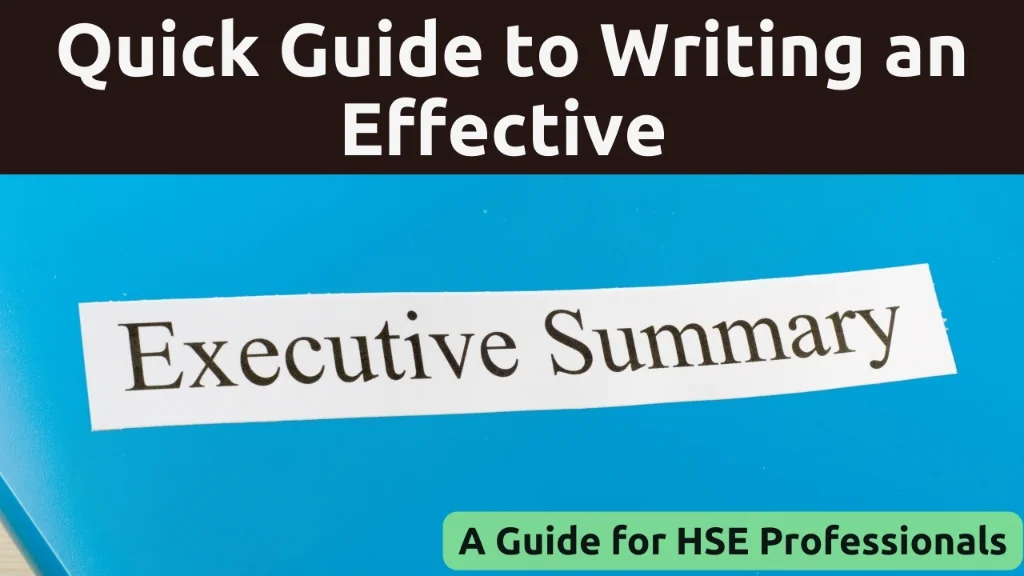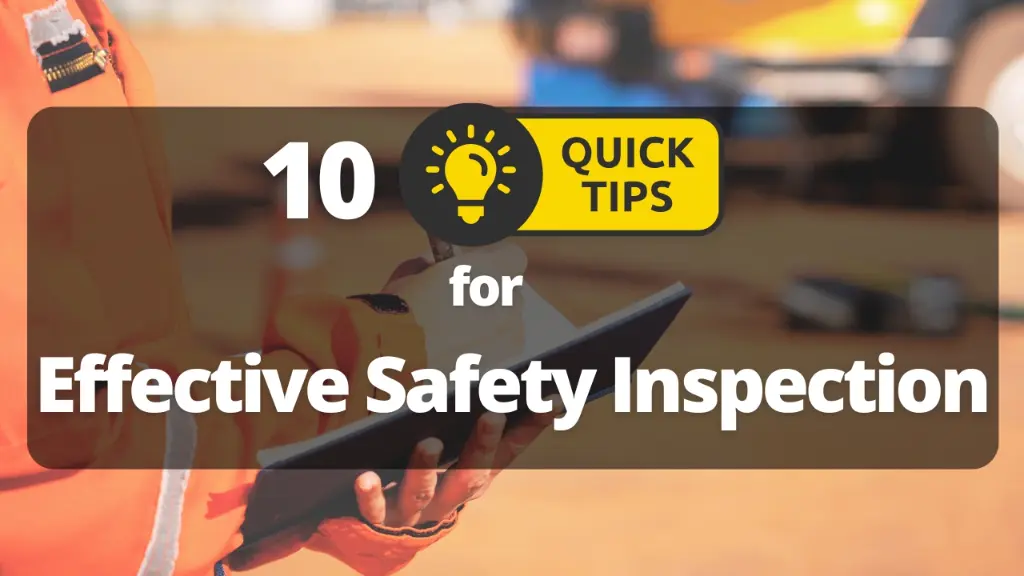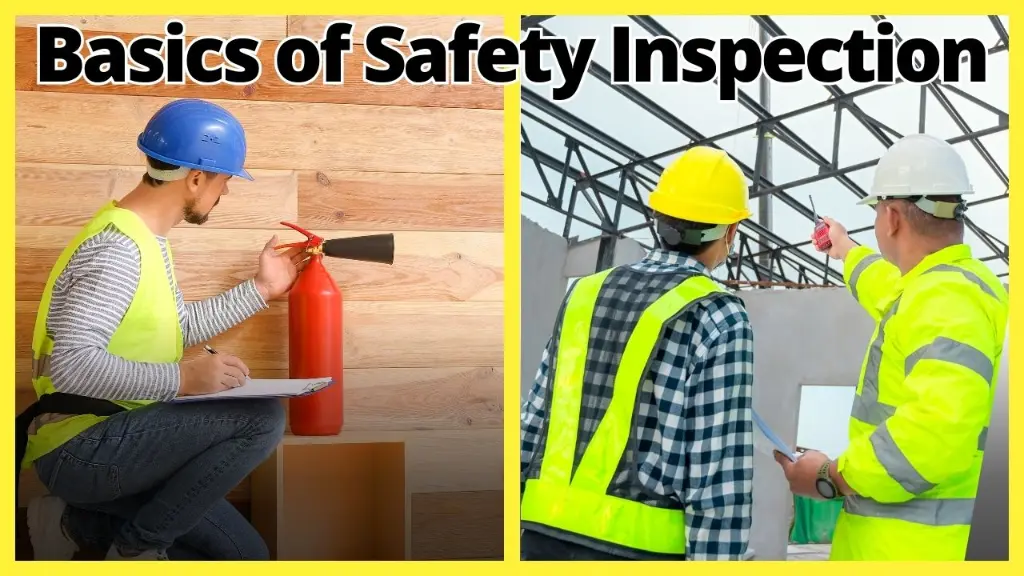Discover how to master the art of writing an Executive Summary in our latest blog. Learn practical tips and techniques for HSE professionals to make your reports clear and engaging. Understanding the Executive Summary has never been easier!
1. Understanding the Executive Summary: A Step-by-Step Guide for HSE Reports
Have you ever struggled to explain the essence of your detailed reports in just a few paragraphs? Do you find it challenging to capture the attention of busy executives with limited time? If so, you’re not alone.
The Executive Summary, often the most crucial part of any report, can be a daunting task for many HSE professionals. You might be wondering, “What is this executive summary, and why should I care?” Well, my friend, let me tell you, a well-crafted executive summary can make or break your report.
Today, we’ll unravel the mysteries of the Executive Summary, making it easy to understand and even easier to write. Let’s dive into this essential skill and transform how you communicate your findings.
2. What is an Executive Summary?
An Executive Summary is a concise overview of the main points of a report. It provides readers with a quick preview of the content and conclusions, allowing them to understand the report’s purpose and key findings without reading the entire document.
Think of it as a snapshot of your entire report or like a movie trailer that gives you a glimpse of the whole story without spoiling the ending.
3. Why is the Executive Summary Important?
Imagine you’re a busy manager with a stack of reports on your desk. Would you rather read a lengthy document, or a quick summary that gets straight to the point? Below are three main importance:
3.1 Grabs Attention:
The Executive Summary is the first part of your report that readers see. It sets the tone and provides the first impression, making it critical to engage your audience right away.
3.2 Saves Time:
Busy executives and stakeholders often don’t have time to read lengthy reports. An Executive Summary allows them to quickly grasp the report’s main points and decide if they need to delve deeper.
3.3 Highlights Key Findings:
For HSE (Health, Safety, and Environment) Audit Reports, it’s even more crucial. Your executive summary should highlight any critical safety issues or non-compliances that need immediate attention. It helps management make informed decisions and prioritize actions to ensure a safe and healthy workplace.
4. The Dos and Don’ts of Writing an Effective Executive Summary:
4.1 Dos:
4.1.1 Be Clear and Concise:
Use simple language and short sentences. Aim to convey the main points without unnecessary detail. Try to avoid jargon and technical terms as much as possible.
For example: instead of writing, “The egress points were obstructed, hindering emergency evacuation,” write “The exits were blocked, making it hard for people to escape quickly in an emergency.”
It’s pertinent to mention that both examples are acceptable & technically correct but the 2nd example makes the sentence more accessible to a wider audience.
4.1.2 Focus on Key Points:
Highlight the main objectives, findings, conclusions and recommendations. Keep it relevant.
For example, if a safety audit uncovered a critical machine guarding issue, prioritize that finding in the summary, even if there were other minor concerns.
4.1.3 Use Bullet Points:
Where possible, use bullet points for clarity and ease of reading.
4.1.4 Keep it Short:
An Executive Summary should be no longer than 10% of the full report. For most reports, one to two pages are sufficient.
4.1.5 Write it Last:
Even though it’s at the beginning of your report, write the Executive Summary after completing the rest of the document. This ensures it accurately reflects the content.
4.1.6 Write in the active voice:
It makes your writing more engaging.
Example: Instead of “The audit was performed by Brijesh Kumar,” write “Brijesh Kumar performed the audit.”
Or instead of writing “The report was conducted by a team of safety experts,” you could write “A team of safety experts conducted the report.”
4.1.7 Proofread carefully:
Typos and grammatical errors can undermine your credibility.
For example, before submitting your executive summary, read it aloud to yourself to catch any errors. Alternatively, ask a colleague to review your summary before submitting it to ensure it’s error-free and professional.
4.2 Don’ts:
4.2.1 Repeat the entire report:
Summarize, don’t regurgitate. For example, your executive summary should not simply be a copy of the introduction to your report.
4.2.2 Introduce new information:
Everything should be covered in the main body of the report. For example, your executive summary should not mention any findings or recommendations that are not discussed in the main body of the report.
4.2.3 Overuse technical jargon:
Make it easy for non-experts to understand. For example, instead of writing “The incident was caused by a human error,” you could write “The accident happened because someone made a mistake.”
4.2.4 Make it too long:
Remember, it’s a summary, not a novel. For example, your executive summary should not be more than two pages long.
5. Steps for Writing a Good Executive Summary: Detailed with Examples
5.1 For Beginners:
5.1.1 Understand the Report:
Read the full report thoroughly to grasp its main points and conclusions.
Example: If you’re writing an HSE Audit Report on a construction site, read through the entire document to comprehend the main safety issues, compliance status, and overall findings.
5.1.2 Identify Key Elements:
Note down the objectives, findings, conclusions, and recommendations.
Example: From your HSE Audit Report, note the main objectives such as ensuring safety compliance, key findings like safety violations or exemplary practices, conclusions about overall site safety, and recommendations for improvement.
5.1.3 Draft the Summary:
Write a draft that covers these elements in a concise manner.
Example: Write a brief draft:
“This report evaluates the safety compliance of the XYZ construction site. Key findings include several safety violations such as inadequate PPE usage and blocked emergency exits. The overall safety status is found to be below acceptable standards, and immediate corrective actions are recommended.”
5.1.4 Use Simple Language:
Ensure your language is clear and easy to understand. Avoid jargon and technical terms. Example: Instead of writing “The implementation of personal protective equipment protocols was found to be suboptimal,” simplify it to “Workers were not using safety gear properly.”
5.1.5 Revise and Edit:
Review your summary to eliminate unnecessary words and ensure clarity. Get feedback from others if possible.
Example: Review the draft for clarity and brevity:
Original: “The site has several areas where safety practices are not followed correctly, leading to a higher risk of accidents.”
Revised: “Poor safety practices increase accident risks at the site.”
5.1.6 Use a clear and concise format:
Bullet points or numbered lists can help organize your information.
5.2 Advanced Tips:
5.2.1 Tailor to Your Audience:
Consider who will be reading the summary. Use language and emphasis that align with their needs and interests.
Example: If your audience includes senior executives, focus on high-level impacts and strategic recommendations. For site managers, emphasize practical steps for improvement.
5.2.2 Create a Logical Flow:
Ensure that the summary has a logical structure. Start with the objectives, move to key findings, and end with conclusions and recommendations.
Example: Structure your summary:
- Objectives: “The objective is to assess the safety compliance of the XYZ construction site.”
- Findings: “Key findings include safety violations and areas of improvement.”
- Conclusions: “Overall, safety compliance is below standard.”
- Recommendations: “Immediate actions include enhancing PPE usage and clearing emergency exits.”
5.2.3 Highlight critical safety issues and Emphasize Impact:
Start with the most important findings and highlight the significance of your findings and recommendations. Explain why they matter.
Example: Highlight the significance:
“Improving safety protocols will reduce accident risks and ensure compliance with regulations, safeguarding workers and the company’s reputation.”
5.2.4 Quantify your results & Use Visuals:
Use numbers and statistics to illustrate the severity of the issues. If helpful, include one or two visuals like charts or graphs to illustrate key points, but don’t overdo it.
Example: Include a simple chart showing compliance levels if it helps clarify your points, but don’t clutter the summary with multiple graphics.
6. Practice Makes Perfect
The skill of writing an effective Executive Summary improves with practice. Start with short reports and summaries, then gradually tackle longer and more complex documents. Review examples of well-written Executive Summaries and seek feedback to refine your skills.
Remember, a well-crafted Executive Summary not only enhances the readability of your report but also ensures that your key messages are conveyed effectively and is your chance to shine.
I hope this blog post has shed some light on the mysterious world of executive summaries. If you have any questions or comments, please feel free to share them below.
Stay safe and keep learning!
Disclaimer: This blog post is intended for informational purposes only and should not be construed as professional advice. Always consult with qualified HSE professionals to ensure your practices meet the relevant regulations and standards.
Click the link to read more topics on 2024 Calendar and Important Days for HSE Professionals.
Join me on Facebook, Linkedin, Youtube, WhatsApp & Telegram for the latest updates.






